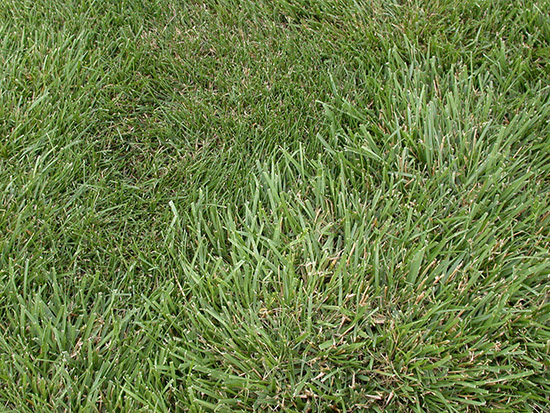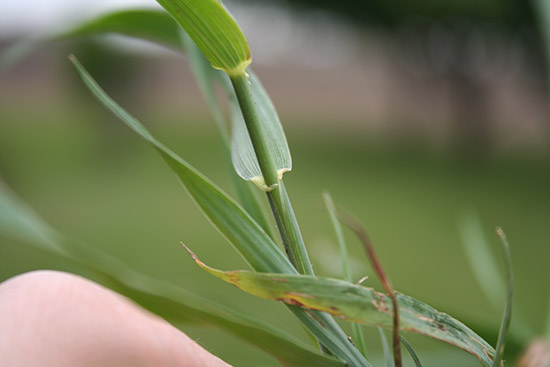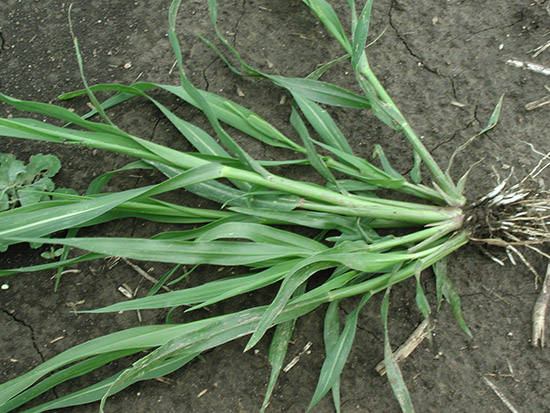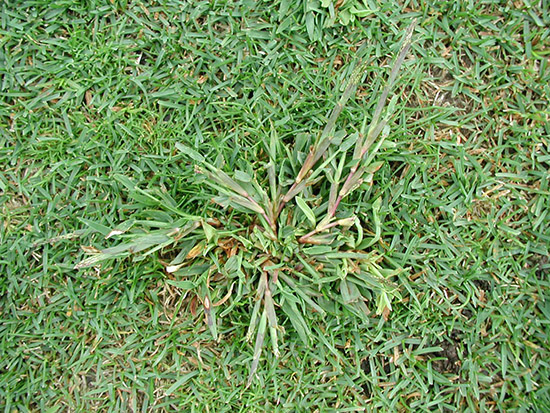Issue 3, May 9, 2016
Is It Crabgrass or Something Else?
Crabgrass will be germinating soon if it hasn't already. Often times, we find that crabgrass is cursed by gardeners even when it's another grassy weed species that is really to blame. Poor crabgrass. It's the one grassy weed name that many homeowners and gardeners alike know, unfortunately. Of course improper identification can lead to improper control methods...and a remaining weed problem.
Though not really look-a-like species, these grasses are commonly confused with crabgrass. Note they are all perennials meaning they can spread by seed but plants may and very likely have overwintered from last year:
Tall fescue (Schedonorus phoenix [Scop.]) is a cool season perennial so it is actively growing now. This clump forming grass typically appears as a circular patch that can become wider from tillering. Short rhizomes (underground runners) may be present. The leaf blades are fairly wide. When tall fescue gets mixed in with a slower growing, finer textured turfgrass species, it becomes quite noticeable. Mowing can help to even out the height difference, however tall fescue's lower stems are often lighter colored, allowing for the spots to remain noticeable. The leaves are dark green in color and the lower surface is glossy.

Tall fescue
Quackgrass (Elytrigia repens) is another cool season perennial that is rapidly making ground wherever it can be found growing right about now. It spreads by seeds and long, white rhizomes and aggressively forms patches. Young plants can be hairy which could make it easily confused with crabgrass. However, growth occurs earlier in the spring. To know for sure if what you have is quackgrass, look for clasping auricles at the base of the leaf. These finger-like projections are key identifiers for quackgrass.

Quackgrass
Johnsongrass (Sorghum halepense) is not typically confused with crabgrass, as far as I know at least. I've included this weed only because this week I overheard a northern Illinois garden center employee tell a customer who thought they had crabgrass that they probably had Johnsongrass. Johnsongrass is a large-growing grass that does not tolerate close mowing. It's found primarily in the southern half of the state. It spreads by thick, aggressive rhizomes and seeds. The leaf blades are smooth.

Johnsongrass
Will the real Crabgrass please stand up?
Crabgrass is a warm season annual. Reproduction is by seed and it's not capable of overwintering in Illinois. So, plants will always begin as seedlings. Most crabgrass seeds germinate when soil temperatures are in the mid 60's for about 3 to 6 consecutive days. However, crabgrass seeds are capable of germinating from very early in the spring to very late in the fall as long as adequate soil moisture is present. Plants that germinate in the fall will have a short life as a hard frost will kill them. Again, poor crabgrass. Crabgrass stems are often purplish near the base and root at the nodes. All of this tillering makes the plant very difficult to pull. The leaf sheath is densely hairy. Large crabgrass leaves are hairy on both sides while smooth crabgrass leaves are sparsely hairy.

Crabgrass
Need help with identification?
Grasses can be challenging to identify! For assistance, check out Identifying Turf and Weedy Grasses of the Northern United States. This pocket sized guide is available for sale at: pubsplus.illinois.edu. (Michelle Wiesbrook)
Author:
Michelle Wiesbrook